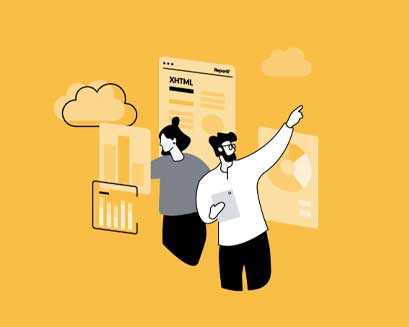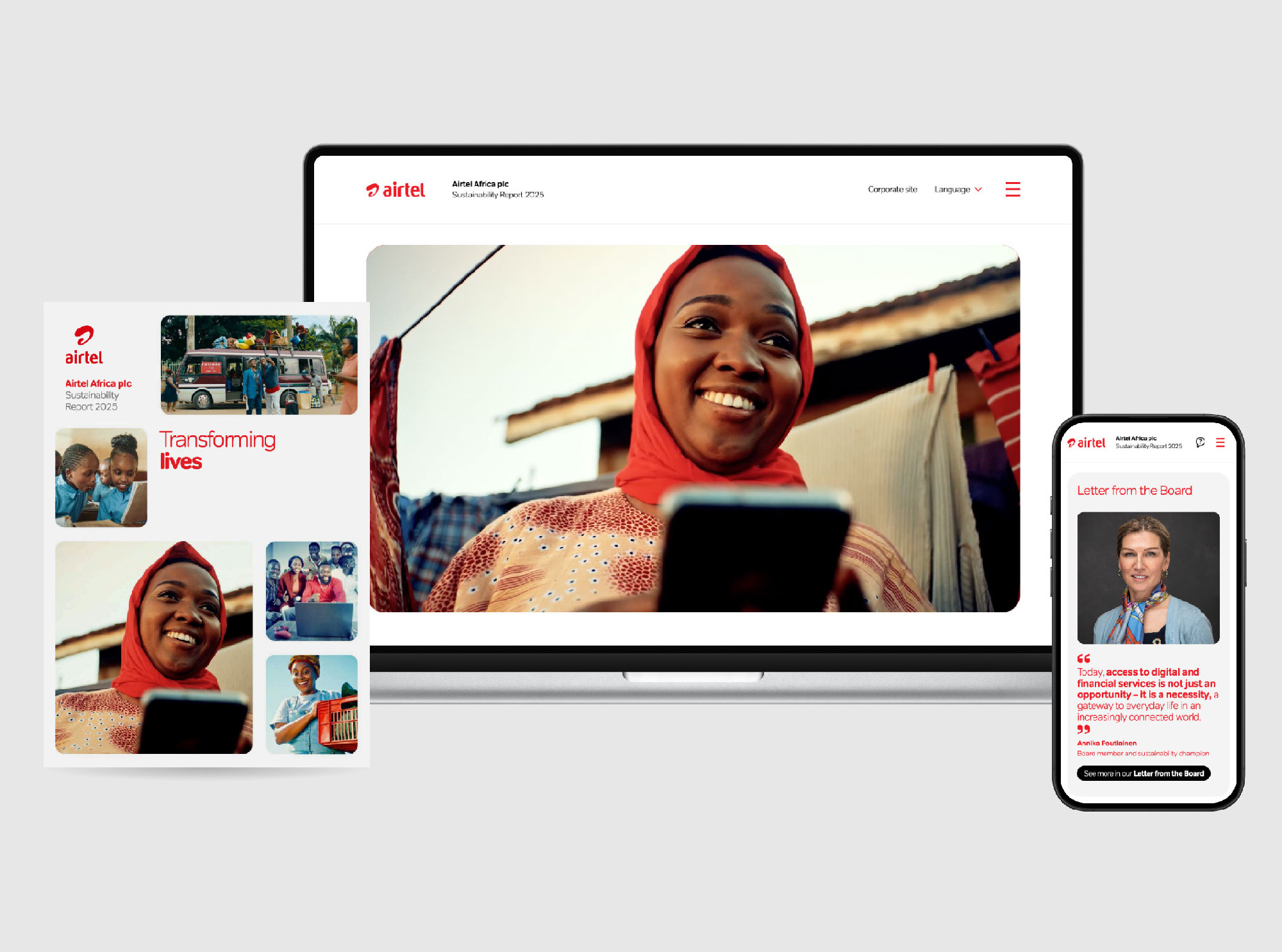FAQs
Who? What?
Why? Where?
And how?
Your guide to digitising reporting with Reportl.
FAQs: Select a category
5: Software integrations
Learn about Reportl compatibility with other finance, data and consolidation software
1: About Reportl
Learn how Reportl can transform
your reporting
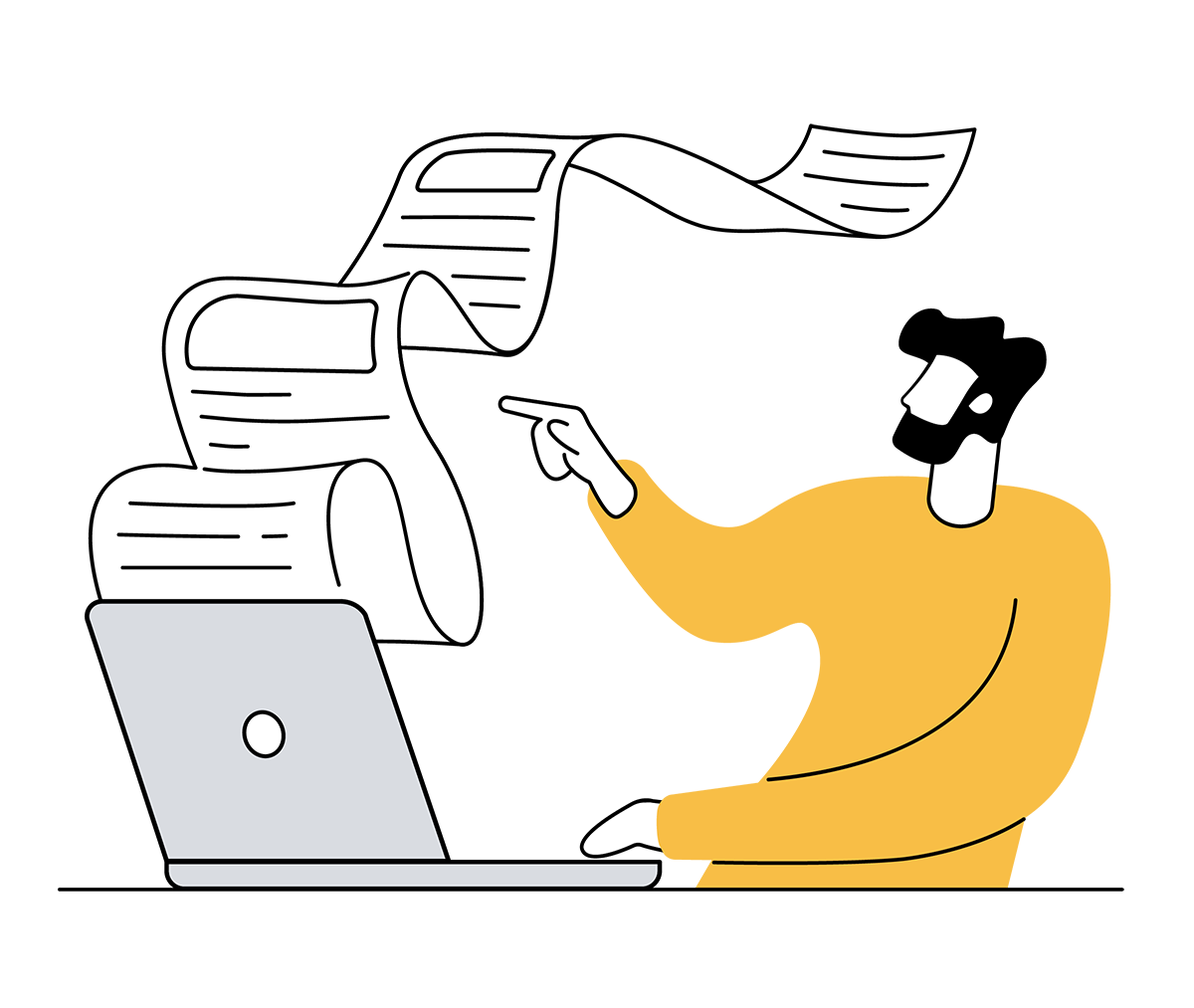
Reportl is a purpose-built reporting content management system (CMS), developed by specialist reporting designers, in collaboration with companies, auditors, regulators and XBRL specialists.
Replacing print design software, Reportl delivers all the required reporting formats from a single system (PDF, iXBRL, online and print).
It requires no major change of process for companies, and is easy to use for content editing. Reporting design experts simply move from print design software to designing in Reportl.
Reportl is a content management system built to enable the digitisation of reporting design and production. Reportl enables one source of content to be published instantly across all required formats (online, iXBRL, PDF and print).
The entire report creation process is digital first, using native HTML – including the PDF and print formats. Multi-format reporting created in this way is more efficient, compliant, accessible and user friendly.
Reportl brings reporting into the digital age with minimal disruption to current workflows, and process efficiencies in digital production. From one system, it delivers single source content across multiple formats, including PDF and online reports.
There are also benefits for end users, as Reportl offers full digital functionality, like the web. Advanced online features are now possible in XBRL reporting, and this is likely to improve rapidly over the next decade.
If you are involved in corporate communications and reporting, you will be aware that many aspects of it are digitising, especially as print quantities have reduced and PDF is voluntary. Changing audience needs and reporting regulations are shifting the reporting focus to the mandatory web format – HTML with XBRL tagging (aka iXBRL).
Reportl makes digital-first, multi-format reporting viable and efficient for companies, complementing financial consolidation, data and disclosure systems.
Using Reportl, companies and their designers can deliver fully designed, engaging online reports, PDF, iXBRL filings, and print reports all from one source of content.
By providing a streamlined process that doesn't involve error-prone conversion, enabling work to be done with measured urgency, rather than a late scramble to fix problems.
In the words of the FRC: "Unlike PDF, HTML is a web-based format rather than a print-based format." The FRC also emphasise that the benefits of this include more accessible, mobile-friendly and interactive reporting.
To deliver what stakeholders need – Reportl's analytics show that 85% of users select the digital-first tagged report format over PDF*. It is vital to provide the PDF as well, and Reportl does this.
Reportl enables the mandatory ‘single electronic format’ (ESEF) to be as powerful for design and communication as it is for data.
It also offers greater efficiency through single-source remote editing and multiple automations of previously manual tasks.
*When offered both in Google search results.
With Reportl, designers and agencies can digitise the specialist skills they already have – moving from print software to digital tools without any need for developers.
2: Regulatory landscape
How Reportl enables full compliance
with digital reporting regulations

Over the past 30 years, the world has digitised. Meanwhile, corporate reporting has remained trapped in a print/PDF time-warp.
But today, corporate reporting is at a tipping point.
1. Printed reports have all but disappeared. In addition, the ever-expanding disclosure requirements mean that print and mailing is no longer viable or sustainable.
2. Reporting regulations now require full digital reporting in web format – HTML. This format should be published online with iXBRL tagging, and be accessible for all users. Currently, very few reports are.
3. Since the mass global adoption of smart phones, stakeholders’ needs have changed radically – it is now estimated that 98% of audiences access content on a mobile device. They expect all content to be easy to find online from a Google search. Only digital-first reports can deliver this.
4. Finally, reporting will become part of the AI revolution. But the power of AI to analyse and assist decisions can only come with the full digitisation of reporting content.
With reporting regulations like ESEF requiring HTML, the digitisation of mandatory reporting is well underway. In the UK, from 2026 the Board declaration on effective compliance controls will include the mandatory digital format (ESEF).
Since 2022, the FRC have highlighted concerns about the quality and usability of ESEF reports produced from a print-first process (PDF conversion). ESEF reports are now being reviewed by regulators, and they have announced plans to alert companies to problems found.
We recommend companies look carefully at the FRC's guidance and consider making the change to a native HTML process.
Yes. Reportl has been built to make the transition as simple as possible for companies, and the main project processes/schedules don’t change.
The shift to Reportl workflow mainly affects the design team / agency. With suitable training, the design team moves from print design software (InDesign) to digital-first design software (Reportl).
The biggest transformation comes as a designer's skills advance – delivering well-designed, multi-channel reporting efficiently and cost-effectively.
‘Digital-first’ doesn't mean online-only reporting. Digital-first describes the process of creating the report – instead of using print design software, the designer uses digital software.
In Reportl, the underlying digital code (HTML) is used to create ALL required formats (PDF, online, iXBRL and print). This means that Reportl delivers accessible, compliant reporting from a single source of content.
The proofing and sign-off process is still most commonly done using Reportl's PDF output – for now at least, PDF remains the best format for this process.
There are many intersecting regulations that are driving the shift to digital reporting.
Digital reporting regulations like ESEF now require a full digital report, not a PDF. International sustainability reporting standards like the ESRS and the IFRS’s ISSB will also require HTML in order to be tagged*.
As corporate reports must be public, digital and PDF reports will need to comply with accessibility requirements too.
(*iXBRL is simply web HTML with data tags applied).
The FCA has identified “low compliance rates.” It states, “we expect issuers to devote the same level of care and attention to their digital (ESEF) report as their PDF or printed report.”
The FRC says, “There remains much to be done as data quality and usability remain below the level expected for companies in a leading capital market.”
‘Native’ HTML has been recommended by regulators because it delivers higher quality, user-friendly, accessible reports. All formats are created ‘natively’ from digital HTML.
Reportl has been purpose-built to comply with this regulatory guidance.
But moving to a digital-first approach isn't only about compliance. It offers many other benefits to companies and stakeholders – including more efficient processes and the opportunity to transform reporting.
PDF is a great format for many uses. But, as a source for creating compliant digital reporting, regulators and standard setters have highlighted its limitations.
The UK FRC states that “PDF conversions suffer from messy, unreliable code, poor usability and excessive file sizes.” As a result, most companies’ mandatory digital reports are currently inaccessible to most stakeholders.
The FRC, ESMA and Netherlands AFM have suggested that companies consider an integrated process based on ‘native’ HTML.
Reportl has been purpose-built to enable designers to deliver this approach for companies.
3: Training
Learn about the training and
resources available from Reportl
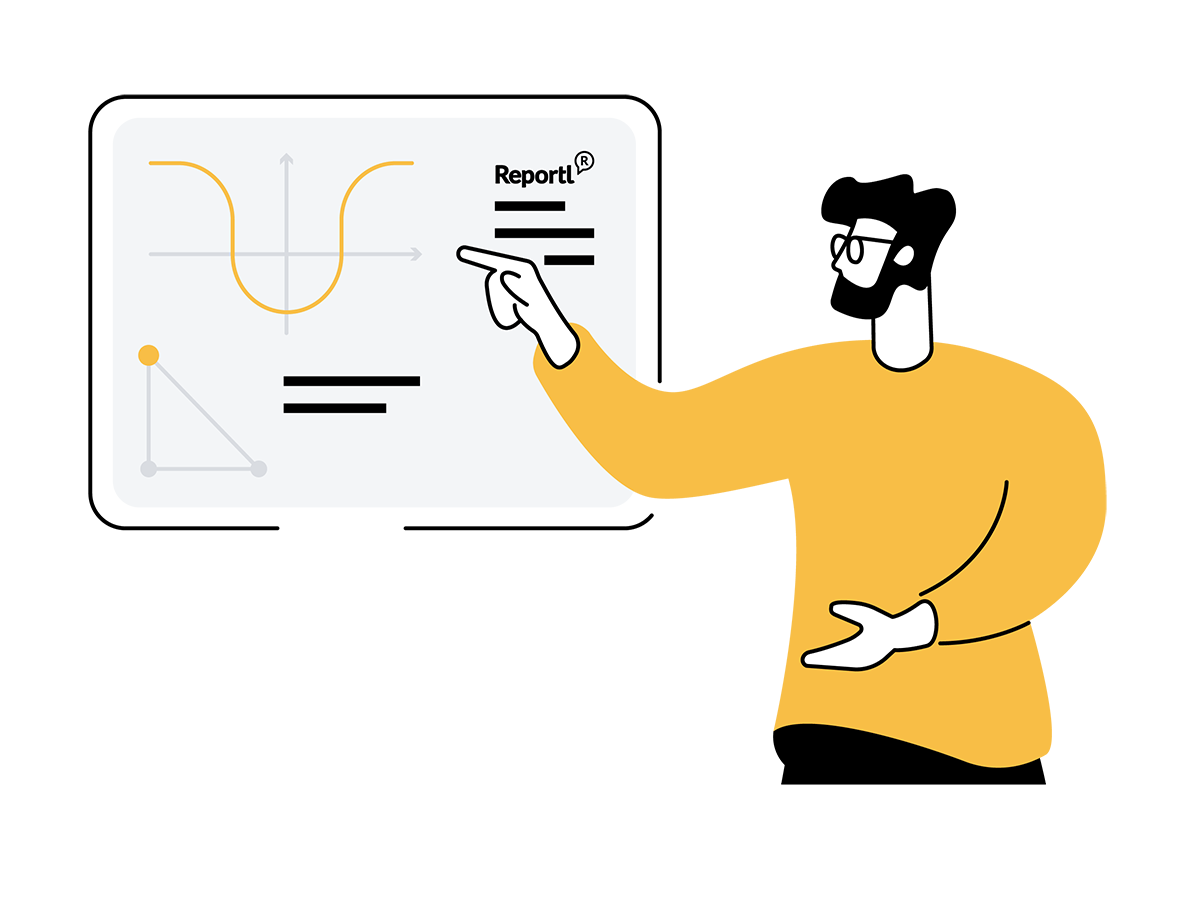
Reportl is a specialist digital publishing platform built to enable report design and production teams to digitise. You do not have to be a developer to use it.
For content editors, Reportl is easy and fast to learn, and takes around 30 minutes to learn the essentials of logging in, editing and previewing designed pages.
For designers, the team will need to have expertise and experience of reporting content, design, and production. Design teams need to complete extensive training and learning to 'digitise' their existing design skills.
Reportl has been built to enable experienced designers to become expert in digital reporting.
Yes, we have a training plan that's been created for production and designers to help them learn the platform. The training consists of a number of video sessions, online resources and tutorials followed by extensive self-learning. If you would like to find out more, contact us at: hello@reportl.com.
Yes, we offer training videos for text editors.
Learning to edit your content in Reportl is very simple, so typically, training for editors is provided by the design team or agency which is delivering the project's design and build in the system. The Reportl team can support with this if required.
For content editing, it takes around 30 minutes to learn.
For designers and production teams there is more to learn. It is like learning how to use a web content management system (CMS) – but with the addition of multiple formats, digital reporting regulations, and XBRL tagging rules.
However, Reportl has been purpose-built to enable experienced reporting designers and production teams to learn. For an experienced senior designer dedicating 100% of time to learning, it takes around 6-8 weeks to be a confident user. As with all skills, they would gain further design expertise the more they use the system.
The system is built to help designers learn multi-format design and take control without needing to know code. This means an experienced Reportl design team needs no developers. We do not recommend that design teams offer digital-first reporting, until they have the required expertise.
Training is usually faster for production than design. It’s typical to be competent in 4-6 weeks of intense learning.
We have a number of training resources to support you through learning Reportl, including a library of training videos, a detailed user guide and a community of users sharing tips and information about the system.
Reportl team can also provide bespoke training sessions and support services to your team if required.

For companies
Reportl makes the editing, proofing and publishing process simple. It enables multi-format, fully compliant and accessible reports to be published in a single click. Learning to edit content and preview your report takes approx 30 minutes.
For reporting design agencies
Expert design and productions teams (often at a reporting agency) move from print software to Reportl. Experienced reporting design teams already have the core skills required, and Reportl enables them to add full digitisation capabilities to this.
This shift in capabilities at the agency requires training across all aspects of digitisation - design, production, project management, consulting, XBRL tagging, controls/assurance processes, filing rules and further emerging regulations.
Alongside Reportl's training resources for self-learning, our team can also offer tailored training programmes if required.
Before starting to build their designs in Reportl, many designers will still wish to explore concepts, styles, themes and messaging in traditional software. This process may help them get their ideas down quickly, which they can then implement in Reportl.
However, once designers gain expertise in Reportl and understand how HTML elements behave, many develop the confidence to experiment with their ideas directly in the platform. This can help to bring ideas to life that would otherwise remain static in the concept stages.
It's important to note that the Reportl design process is not like designing a website for developers to build. In Reportl, expert designers have full control over the design and build from start to finish. There is no development stage needed.
These changes offer designers a different way of thinking about their process. Once they have mastered the system, the reporting designer has many more opportunities for digital creativity.
Digital-first reporting design is different to print. We recommend the set up (build) of the digital report page types and styles earlier than the traditional print design process. The set up uses the prior year’s report content and fully integrates XBRL tagging, delivering compliance-ready xHTML and PDF outputs before the project kicks off. The project is then ready for new content to be flowed in, including text, tables, imagery, videos etc.
The content and all visual ‘elements’ of the design can change up to sign-off as required (images, graphics, charts, videos, etc) but the core template framework design and formatting does not change after the set up. This pre-build process makes digital reporting viable for fixed, legal deadlines - unlike web projects.
Designing in digital-first does have some limitations compared to print, but Reportl has been built to minimise these limitations. In most cases, the PDF (and printed report) produced from Reportl can be as well designed as in traditional print software.
It's important to note that multi-format design is increasingly influenced by digital needs – for example, creating a mobile-friendly design will affect how a page is designed in a PDF.
With Reportl, we believe the modest design limitations of HTML are outweighed by its many digital capabilities and benefits.
We do not recommend designers trying to exactly 'copy' an existing print design, but instead adapt the design elements to the multi-format opportunities. If you are aiming to keep a print-first design approach, digital-first design may not be suitable for your needs.
5: Software integrations
Learn about Reportl's compatibility with other
finance, consolidation and sustainability data software
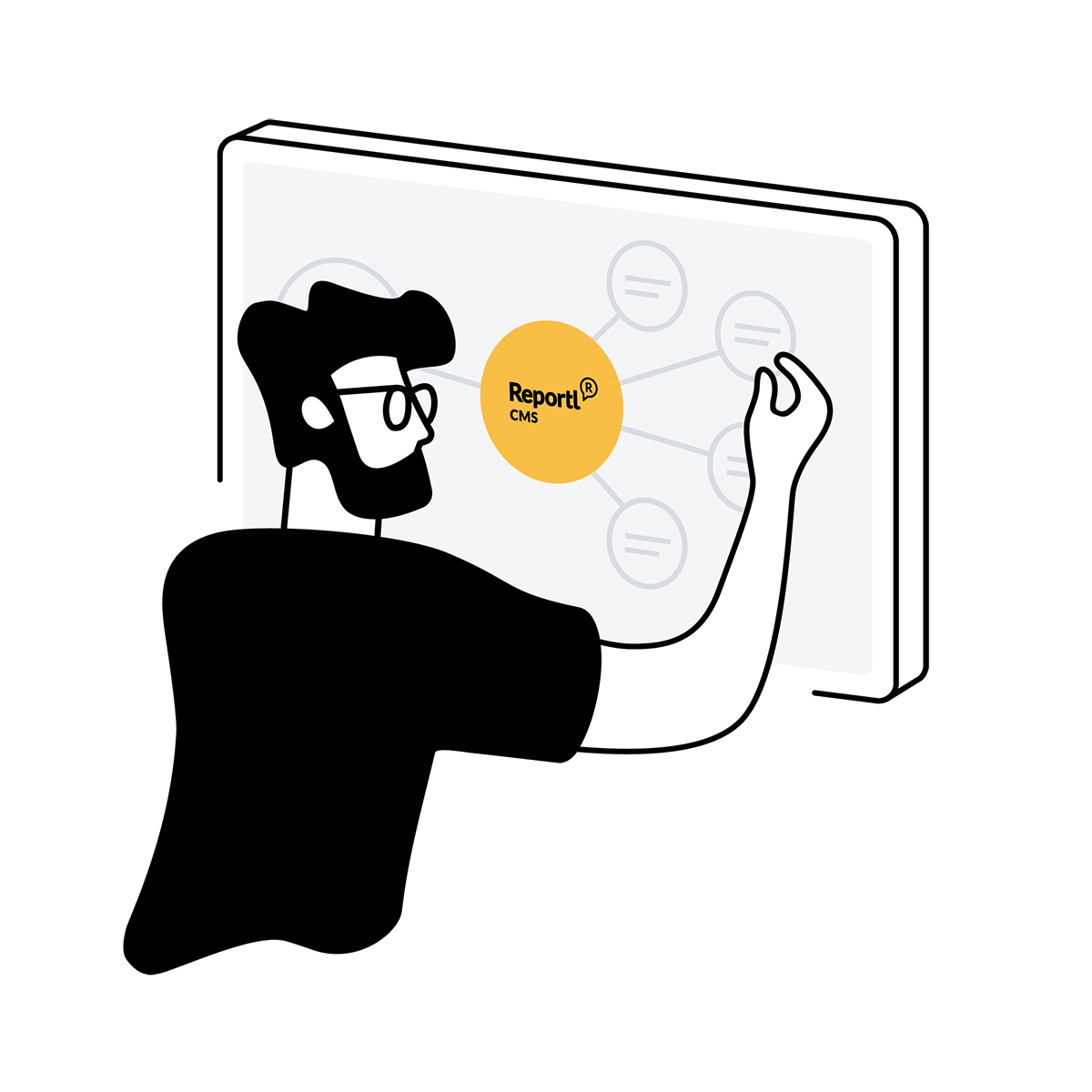
Reportl offers two ways to work with Excel as your content source:
1. Copy/paste
This is the traditional method of transferring content. Reportl allows design and production teams to paste Excel tables in directly. The copy/paste process should only be done by specialist design and production teams – this is because content from these sources often includes unwanted code that can affect the XBRL tagging and the table styles.
2. Excel table sync
This function allows the design and production team to set up tables in Excel for automated sync directly into Reportl tables. This workflow means that no manual editing and no copy/paste is required, and can improve process efficiencies and content controls.
Excel sync enables finance and data management software to integrate the Excel outputs with the designed and XBRL-tagged format in Reportl.
This is an advanced function and the workflow needs to be carefully planned between the team providing the Excel data/content and the team creating the report design.
Yes. The Reportl workflow is compatible with most finance systems that can export to Excel.
Reportl can sync all table-based data and text content from Excel. As outlined in the answer above, this process requires careful set up and planning by digital design and production specialists.
Yes. Workiva data can be exported via Excel and sync'd directly into Reportl.
As a multi-format digital-first solution, Reportl provides digital design and build functionality that is complementary to Workiva. Reportl provides full online, mobile-friendly tagged reporting and accessible reports, both in PDF and online.
As digitisation of processes evolve, we are also exploring opportunities for further compatibility between Workiva and Reportl.
6: Information security
Find out how Reportl keeps all your information
and data secure. If you require more detail on our
information security, please contact our team.

Reportl’s system and data is hosted on Tier III and IV servers across multiple locations in secure EU hubs to create server redundancy. Reportl’s servers are located in Finland and Germany. In addition to Reportl's ISO27001 certification, our hosting service provider is also independently ISO27001 certified.
Reportl operates a highly secure server environment protected by the latest digital security protections.
These protections include:
- Ports closed in and out, using strict firewall policies.
All server communication channels are end-to-end SSL encoded.
All data is encrypted by SSL/TLS1.3.
DDoS and WAF protection - Cloudflare.
User access is protected by secure login with two-factor authentication (2FA) using a token code.
Reportl stores user credentials securely and monitors privileged sessions.
Server infrastructure only accessed via secure VPN, not available to access publicly.
- Published reports hosted on separate servers from the Reportl system and database.
Twice-yearly independent pen testing and security audits.
All server components are continuously updated, security updates are immediate.
Reportl's data instances are continuously monitored across 60 server and application level parameters, including checks for disk, server load, memory usage, network traffic, CPU usage, database, web server stack elements, running processes and server application components health.
Live monitoring also checks Reportl application specific services, for example login and data load. On any suspicious change or outage, our monitoring service immediately alerts our DevOps team, which is on duty 24/7/365 to respond and ensure business continuity and uptime.
View live server status at status.reportl.com.
Yes, users’ access is protected by secure login with two factor authentication (2FA) using a token code. To enable this protection, users must set up their 2FA with the Google Authenticator app.
Yes. Project data is only accessible to approved project contributors with login and permissions set by the project administrator. Data and content cannot be accessed by any user outside the approved project team.
Approved project team members may be members of the team at the reporting entity, and at their service provider (e.g. reporting design team, audit firm, copywriter, technical developers, etc.)
For consistency, we recommend using the Chrome browser. If you have to use a different browser, some functions may not be fully supported.
As with all digital content management systems (CMS), Reportl editing is browser based. It is an advanced online editing system, so you will need a fast, reliable and secure internet connection. An ethernet (wired) connection to your network (router) may perform better than Wi-Fi.
